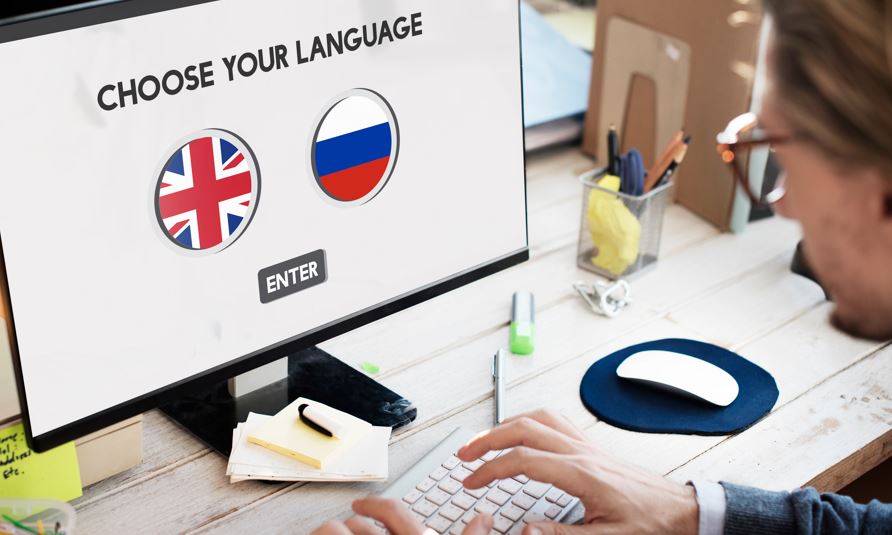How Duolingo Makes Learning a New Language Fun
2nd October 2024
Diane Marley
Are you facing challenges in maintaining motivation while acquiring proficiency in a new language?
Duolingo has effectively transformed the landscape of language acquisition through the integration of gamification within its platform.
Dive into the intricacies of how Duolingo leverages gamification to instill an element of enjoyment and interactivity into the learning process.
Delve into the scientific principles underpinning Duolingo's methodology, encompassing the utilization of spaced repetition and contextual learning.
Acquaint yourself with the distinctive attributes of Duolingo, such as immersion, stories, podcasts, and bots.
Derive motivation from real-life anecdotes detailing the accomplishments of individuals who have successfully attained their language learning objectives with the aid of Duolingo.
The Gamification of Language Learning
The incorporation of gamification in language learning has fundamentally transformed the process of acquiring new linguistic skills. Duolingo emerges as a leader in this paradigm shift, offering an interactive and user-friendly application that not only enhances the educational experience but also proves to be both engaging and impactful.
How Does Duolingo Use Gamification?
Duolingo utilizes gamification strategies, integrating challenges, rewards, and progress monitoring to incentivize users to actively participate in language learning. By employing these gamification methods, users have the opportunity to engage in challenges to assess their proficiency, receive virtual rewards upon task completion, and monitor their advancement as they progress through language proficiency levels. The provision of a feeling of accomplishment and immediate gratification by Duolingo effectively sustains user motivation and involvement in their learning process.
Each successful challenge or earned reward fosters a sense of achievement among users, subsequently enhancing their enthusiasm and commitment towards acquiring fluency in a new language.
What Are the Benefits of Gamified Learning?
The advantages of gamified learning encompass heightened motivation, fostering an enjoyable language education experience, and promoting consistent daily practice, resulting in more efficacious learning outcomes.
By integrating elements of gaming, such as rewards, points, levels, and interactive challenges, into the educational process, students demonstrate increased engagement and motivation in advancing their language proficiency. The thrill and sense of accomplishment derived from successfully completing tasks within a game-like environment establish a positive feedback loop, motivating learners to persevere in their academic pursuits.
Additionally, the element of competition or collaboration present in certain gamified language learning platforms serves to further elevate motivation levels by incentivizing students to aspire towards enhancement and excellence. This interactive approach not only renders the learning process pleasurable but also fosters the habit of consistent daily practice, a critical component for reinforcing language competencies and ensuring enduring retention.
The Science Behind Duolingo's Methodology
The methodology employed by Duolingo is founded on scientific principles, utilizing strategies like spaced repetition and adaptive learning to deliver personalized and efficient learning experiences for individuals aiming to enhance their language proficiency.
What is Spaced Repetition?
Spaced repetition is a pedagogical method that entails systematically increasing the intervals of time between successive reviews of previously acquired material for the purpose of augmenting memorization and retention capacities.
This technique holds particular significance in the realm of language acquisition as it facilitates the storage of newly acquired vocabulary, phrases, and grammatical rules into the learner's long-term memory with heightened efficacy. Through the strategic spacing of review sessions, individuals are compelled to recall information at the precise moment it is on the brink of being forgotten, thereby reinforcing memory associations. This iterative process not only aids in the remembrance of individual lexical items but also contributes to an enhanced comprehension of grammatical constructs and linguistic patterns. Ultimately, the integration of spaced repetition into one's study regimen enables language learners to attain heightened levels of fluency and proficiency over the course of their learning journey.
How Does Duolingo Incorporate Spaced Repetition?
Duolingo integrates spaced repetition methodology by adjusting lesson intervals according to user performance, thereby ensuring that language concepts are revisited at optimal intervals to improve retention and comprehension.
This personalized methodology enables learners to advance at their individual pace and reinforces weaker areas with greater frequency, resulting in enhanced memory retention. As users engage with the application and finish exercises, Duolingo consistently assesses their responses to ascertain the appropriate timing and frequency for revisiting particular topics.
Through tailoring the timing of review sessions in alignment with the strengths and weaknesses of each user, the platform enhances the learning process to facilitate effective and enduring language mastery.
What is the Role of Context in Language Learning?
The role of context in language learning is paramount, serving as a pivotal factor in enabling learners to comprehend how language operates within authentic scenarios, thereby furnishing cultural insights that augment both comprehension and communication abilities.
Upon grasping the contextual framework, learners can adeptly decipher subtleties, idiomatic expressions, and cultural allusions inherent in the language. This comprehension not only facilitates effective communication but also nurtures a more profound rapport with native speakers.
By immersing themselves in the social, historical, and cultural milieus where the language is prevalent, learners can gain an appreciation for its significance and pertinence. Practical utilization in real-world settings allows for the application of learned concepts, thereby reinforcing comprehension and memorization of language elements.
Consequently, understanding context transcends mere grammatical and lexical proficiency, metamorphosing language acquisition into a dynamic and immersive educational endeavor.
How Does Duolingo Use Context to Enhance Learning?
Duolingo utilizes contextual learning to enrich the educational experience through the integration of culturally pertinent scenarios and interactive exercises that simulate authentic language usage, aiding learners in cultivating practical communication skills.
For instance, Duolingo integrates elements such as virtual dialogues with native speakers, enabling learners to hone their speaking and listening capabilities within a contextual framework. The application features translation exercises that necessitate learners' comprehension and application of vocabulary across diverse scenarios. By immersing users in culturally varied contexts and delivering interactive exercises, Duolingo guarantees that learners not only grasp the language but also possess the ability to effectively communicate and engage in real-world situations.
Duolingo's Unique Features
Duolingo sets itself apart through a variety of distinctive features crafted to offer immersive, interactive, and efficacious language practice, tailored to individuals across all levels of proficiency.
1. Immersion
Duolingo emphasizes immersion as a crucial aspect, providing learners with an authentic language learning environment that replicates natural language acquisition processes.
Through the integration of components such as listening exercises, speaking challenges, and real-world contextual scenarios, Duolingo guarantees that learners interact with the language through diverse means. For instance, individuals have the opportunity to listen to native speakers, refine their pronunciation skills through speaking exercises, and utilize their acquired knowledge in practical scenarios via interactive dialogues. This multifaceted approach offers learners a comprehensive experience that closely mirrors the natural acquisition of a language in real-world contexts.
2. Stories
Duolingo Stories provide engaging reading exercises designed to enhance learners' comprehension skills while offering interesting and culturally relevant narratives.
These stories serve as an important component in language acquisition, offering an interactive platform for learners to engage with and practice their reading skills in an enjoyable manner. Covering a diverse array of topics and themes, the stories not only aid in expanding vocabulary but also expose learners to various sentence structures and idiomatic expressions. This dynamic and interactive approach fosters motivation and sustained interest among learners, thereby enhancing the effectiveness and enjoyment of the learning process. By actively engaging with these stories, learners can improve their language proficiency, gain valuable cultural insights, and broaden their knowledge base.
3. Podcasts
The Duolingo Podcasts present valuable listening exercises, enabling learners to enhance their auditory skills by engaging with real-world stories and dialogues in the target language. These podcasts provide a unique opportunity for language learners to immerse themselves in genuine conversations and narratives, aiding in the comprehension of pronunciation, intonation, and vocabulary within a contextual framework.
By actively engaging with these compelling episodes, listeners can enhance their comprehension abilities, reinforce their language learning advancements, and cultivate exposure to diverse cultural perspectives. The narrative structure of the podcasts not only enhances the learning experience but also facilitates a deeper comprehension of the language by presenting natural and relatable content.
4. Bots
The Duolingo Bots provide interactive language practice opportunities that enable learners to engage in simulated conversations and enhance their speaking skills within a risk-free environment.
These bots are intricately designed to replicate real-life conversations by responding to prompts from users and offering constructive feedback on pronunciation and grammar in a manner that emulates natural dialogue. Through interactions with these bots, users can refine their fluency, expand their vocabulary, and bolster their confidence in using the language.
The tailored feedback and immediate corrections offered by these bots assist learners in identifying and rectifying errors, thereby augmenting the effectiveness and engagement of the learning process. This dynamic approach fosters an enjoyable and immersive learning environment, motivating users to engage in consistent practice and make swift progress in their language proficiency.
Real-Life Success Stories with Duolingo
The real-life success stories involving Duolingo serve as a testament to how individuals have successfully attained their language-learning objectives, enhanced their proficiency, and surmounted language barriers. These accounts effectively highlight the efficacy of the app in the realm of language education.
1. Learning a Language for Travel
Numerous individuals utilize Duolingo as a resource for acquiring proficiency in a new language, particularly for travel purposes, in order to effectively communicate and immerse themselves in diverse cultural environments.
For example, Rachel, an independent traveler, availed herself of Duolingo to acquire a foundational understanding of Spanish prior to embarking on her journey to Mexico. Through the utilization of the application's interactive learning modules and practical exercises, she adeptly managed to place orders at eateries, solicit directions, and engage in meaningful dialogues with local inhabitants.
Similarly, John, a corporate traveler, honed his Mandarin language skills through Duolingo, subsequently facilitating his ability to engage in negotiations and establish connections during his business trips to China. These exemplary instances underscore how Duolingo serves as an enableing tool for individuals seeking to refine their linguistic proficiencies and maximize the value of their travel endeavors.
2. Improving Job Opportunities
Enhancing language proficiency through the use of Duolingo can result in enhanced job prospects and career progression, given the high value placed on language abilities in the global employment landscape.
The acquisition of fluency in multiple languages can substantially enhance one's curriculum vitae and unlock opportunities across a diverse array of industries. For example, an individual who recently completed their studies witnessed a notable upsurge in job offers within the realms of international business and marketing after incorporating proficiency in Spanish and French through Duolingo. Likewise, a customer service professional seamlessly transitioned into a sales position at a multinational corporation following the mastery of German on this platform. These instances of accomplishment illustrate the direct correlation between language skills obtained via Duolingo and the augmentation of employment prospects, paving the way for fulfilling and dynamic career trajectories.
3. Enhancing Cognitive Skills
Engaging in language learning through Duolingo not only serves to enhance linguistic proficiency but also results in the improvement of cognitive skills, including memory, problem-solving, and multitasking abilities.
The cognitive demands of engaging with Duolingo's language learning exercises necessitate the brain's constant processing and retention of new linguistic information, leading to an expansion in memory capacity. The interactive features of the platform prompt users to engage in problem-solving tasks while navigating through diverse language lessons, thereby fostering critical thinking skills.
Furthermore, the challenge of juggling multiple languages concurrently on Duolingo serves to test and improve multitasking abilities, ultimately enhancing cognitive flexibility and adaptability. These cognitive exercises not only refine language skills but also contribute significantly to overall brain training and cognitive development.















